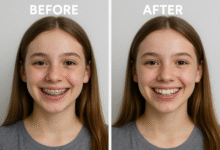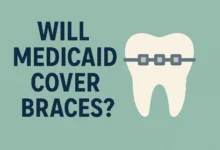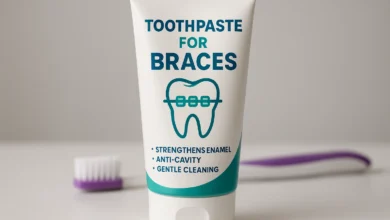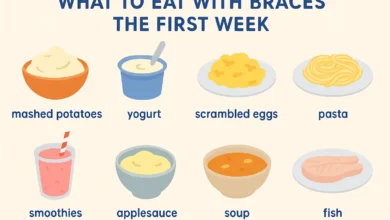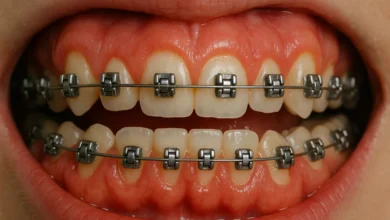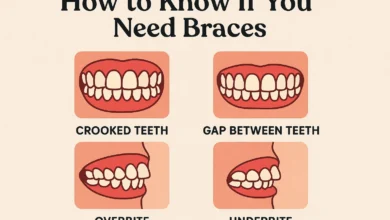Braces at Age 8? Why Early Treatment Could Save Your Child’s Smile

Braces at Age 8: Early Orthodontic Treatment Explained
Introduction
When braces come to mind, the first thing most people think of is teenagers with braces, sparkling their metallic smiles. Hard to believe, isn’t it, that many kids receive orthodontic treatment much earlier? Indeed, age 8 is the most beneficial to get braces when it comes to jaw development, bite alignment, and oral health for years to come.
If you’re a parent asking if braces are needed for an 8 year old, Orthodontist Braces Toronto reveals that early assessment appointments are highly recommended, granting children the opportunity to identify possible issues before they advance. This article has everything you need to know about braces for 8 year olds—need, benefits and risks, costs, how it all works, and what to expect through treatment.
1. Why Braces at Age 8?

The American Association of Orthodontists (AAO) suggests that children should have their first orthodontic evaluation at age 7. Orthodontists can identify problems with jaw growth and tooth alignment when enough permanent teeth have erupted by age 8.
Braces are not required for every 8-year-old child but early orthodontic treatment known as interceptive orthodontics helps stop more serious issues from developing. The purpose of getting braces at age 8 is to stop future complications from developing while enhancing long-term results.
2. Signs Your Child May Need Braces Early

Parents often wonder what symptoms or signs to look for that indicate the need for braces at age 8.
Common Signs:
Early or late loss of baby teeth
Crowded or overlapping teeth
Protruding front teeth
Crossbites or underbites
Thumb sucking past age 5
Speech difficulties
Mouth breathing
Jaw shifting or clicking
Difficulty chewing or biting
Schedule an evaluation with a pediatric orthodontist if you notice any of these issues. Early monitoring is valuable even if your child does not need braces at age 8.
3. What Is Early Orthodontic Treatment?
The first stage of orthodontic treatment known as Phase 1 treatment occurs when children have both baby teeth and adult teeth. The purpose of this treatment extends beyond tooth alignment because it aims to direct jaw development while making room for upcoming teeth and addressing detrimental oral behaviors.
Early Treatment Goals:
Improve facial symmetry and bite function
Prevent permanent teeth from erupting improperly
Reduce need for extractions later
Eliminate the need for more complex treatments in the future
Getting braces at age 8 can be a crucial first step in a two-phase orthodontic plan.
4. Benefits of Getting Braces at Age 8

There are numerous advantages to starting braces early when treatment is truly needed.
Key Benefits:
Guides proper jaw development
Corrects crossbites and underbites early
Improves speech and breathing
Prevents trauma to protruding front teeth
Creates space for future permanent teeth
Reduces length and cost of later treatment
Boosts self-confidence and social comfort
Proactive management of dental issues through early braces at age 8 will create a foundation for a healthier and more attractive smile throughout your child’s teenage years and adult life.
5. Common Conditions Treated with Braces at Age 8

Some dental and skeletal issues are best addressed early. Here are the most common problems orthodontists treat with braces at age 8:
1. Crossbite
A condition where the upper and lower teeth do not align properly.
2. Overbite / Underbite
Severe bite issues that may impact jaw growth.
3. Crowding
Insufficient space in the jaw for proper tooth eruption.
4. Spacing
Excessive gaps between teeth.
5. Jaw Asymmetry
When one side of the jaw grows faster or differently than the other.
Treating these issues at a younger age can prevent jaw surgery or tooth extractions later on.
6. Types of Braces for 8-Year-Olds

Not all braces are the same, especially for children.
Most Common Braces for Kids:
Traditional Metal Braces: Small, durable, effective, and colorful bands can be fun for kids.
Partial Braces: Used on only a few teeth to guide growth or make room.
Palatal Expanders: Not braces, but used alongside them to widen the upper jaw.
Space Maintainers: Hold space for permanent teeth after early loss of baby teeth.
Removable Braces or Functional Appliances: Used for jaw guidance, such as the Twin Block or Herbst appliance.
Your orthodontist will help decide whether full braces or other appliances are most appropriate at age 8.
7. Phase 1 and Phase 2 Orthodontics Explained
If your child gets braces at age 8, it’s often part of a two-phase treatment plan.
Phase 1 (Early Intervention):
Occurs between ages 7–10
Lasts 9–18 months
Focuses on jaw growth, alignment, and space creation
Phase 2 (Final Alignment):
Occurs during adolescence (age 11–14)
Full set of braces once all permanent teeth erupt
Focuses on bite correction and fine-tuning alignment
The need for two phases of orthodontic treatment does not apply to every child but braces at age 8 can benefit those who need them by shortening and improving Phase 2 treatment success.
8. How Long Do Braces Last at Age 8?

Treatment time varies depending on the child’s needs and compliance.
Average Duration:
Phase 1 Braces: 9 to 18 months
Observation Period: 6–24 months (between phases)
Phase 2 Braces: 12 to 24 months (later)
The earlier your child begins treatment for jaw-related problems, the less time they may spend in full braces later.
9. What to Expect During Treatment
Getting braces at age 8 is a big milestone. Here’s what to expect.
First Appointment:
X-rays, 3D scans, or impressions
Discussion of treatment plan
Explanation of appliances used
Follow-Up Visits:
Every 6–8 weeks
Bracket or wire adjustments
Monitoring of growth and tooth eruption
At-Home Responsibilities:
Brushing and flossing 2–3 times/day
Avoiding sticky or hard foods
Wearing elastics or removable appliances as instructed
Education and consistency are key to successful outcomes when starting braces at age 8.
10. Cost of Braces at Age 8
Average Costs in the U.S.:
Phase 1 Treatment: $2,000 – $4,500
Full Braces (Later): $3,500 – $7,500
Your orthodontist will provide an estimate based on the complexity of the case.
💡 Tip: Some orthodontists offer discounted packages when both phases are planned with the same office.
11. Insurance and Payment Options
Many dental insurance plans cover a portion of orthodontic care for minors.
Coverage Tips:
Look for orthodontic coverage with a lifetime max (typically $1,000–$3,000)
Confirm whether both phases are covered
Ask about interest-free payment plans
Use FSA or HSA funds to save tax-free
Understanding your insurance policy can reduce out-of-pocket costs for braces at age 8.
12. Risks and Considerations
Though early braces are safe and effective, they do come with some considerations.
Possible Risks:
Discomfort or mild pain after adjustments
Risk of cavities if hygiene is poor
Bracket breakage due to certain foods
Over-treatment or unnecessary early intervention (always get a second opinion if unsure)
The success of braces at age 8 depends on compliance and the experience of your orthodontist.
13. Success Stories: Braces at Age 8 Before and After

Case Study 1:
Name: Emma
Issue: Severe overbite, crowding
Treatment: Phase 1 braces + expander
Result: Jaw growth normalized; reduced need for extractions in Phase 2
Case Study 2:
Name: Liam
Issue: Crossbite and thumb-sucking habits
Treatment: Functional appliance + partial braces
Result: Jaw symmetry improved; habit eliminated
These success stories show that starting braces at age 8 can lead to healthier, more confident smiles.
14. Alternatives to Braces for Young Kids

Not every 8-year-old needs braces right away. In some cases, alternatives may be suggested.
Possible Alternatives:
Space maintainers
Habit correction appliances
Removable retainers
Delayed treatment with observation
Orthodontists will only recommend braces at age 8 if they believe it will provide measurable benefits for your child.
15. Final Thoughts: Should My Child Get Braces at Age 8?
The decision to get braces at age 8 should not be made for every child but children who show clear signs of jaw development issues can benefit from early treatment.
Key Takeaways:
Age 8 is an ideal time to evaluate jaw and tooth development.
Early intervention can reduce the need for surgery or extractions later.
Two-phase orthodontics provides a comprehensive long-term solution.
Always consult a certified orthodontist who specializes in pediatric care.
If you’re still unsure, schedule a consultation. Early action today can mean fewer problems—and fewer expenses—tomorrow.
Braces on Crooked Teeth Before and After: Real Results


